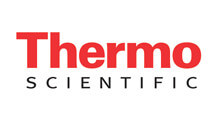Introduction
Pesticides are used globally to improve the production and yields of agricultural crops and their use is essential to ensure a sufficient global food supply. However, this widespread use of pesticides and the potential for them to remain in the final product is of significant concern to consumers and to governments whose responsibility it is to ensure a safe food supply. Consequently, legislation exists to protect consumers from exposure to contaminated foods. This legislation requires that foods are monitored for both the type and quantity of the pesticide present, with each pesticide given a maximum residue limit (MRL) in a particular sample commodity. The list of compound and sample combinations is extensive, creating a challenge for accurate and reliable routine monitoring.


Laboratories are under ever-increasing pressure to screen samples for pesticides in a single analysis, with a fast turnaround time and at a competitive cost. Most existing laboratories rely on targeted analytical approaches using both gas chromatography and liquid chromatography coupled to mass spectrometry instrumentation. These techniques cover the wide range of chemical classes that need to be monitored and at the required levels of sensitivity and selectivity. However, they are limited to only those compounds in the target list, which are usually selected based on the residue definition and legislation requirements to demonstrate that the food is fit for consumption. These techniques require careful optimization of acquisition parameters for each compound and the monitoring of acquisition time windows to ensure detection of the analyte. To increase the scope of the analysis, chemical screening methods using high-resolution, full-scan mass spectrometry have received significant attention in recent years. These methods use non-targeted acquisition, in which a generic full scan acquisition is run, followed by targeted data processing of a list of compounds within a database. Although data interrogation is performed against a list of target compounds, retrospective data analysis is possible in order to identify new compounds that were not screened for at the time of acquisition. For this approach to be used in routine analysis, screening data processing software needs to be fast and accurate enough to detect residues at low concentrations with an acceptably low level of false negative results, as described in the European Union guidelines.1 There is no recommendation for the number of false positives, but it is necessary for routine laboratories to keep this number as low as possible to minimize the time required for additional investigation. The majority of samples that pass through a laboratory are compliant with the legislation. Therefore, it is efficient to quickly screen compliant samples from those that are suspected to be contaminated. Following an initial screen, the suspect positive samples are reanalyzed using a second confirmatory method (e.g., GC-MS/MS) to confirm suspect positives and to accurately determine the concentration of the pesticide present. The confirmatory analysis contains a complete calibration series in an appropriate matrix that is not included in the screening analysis.





